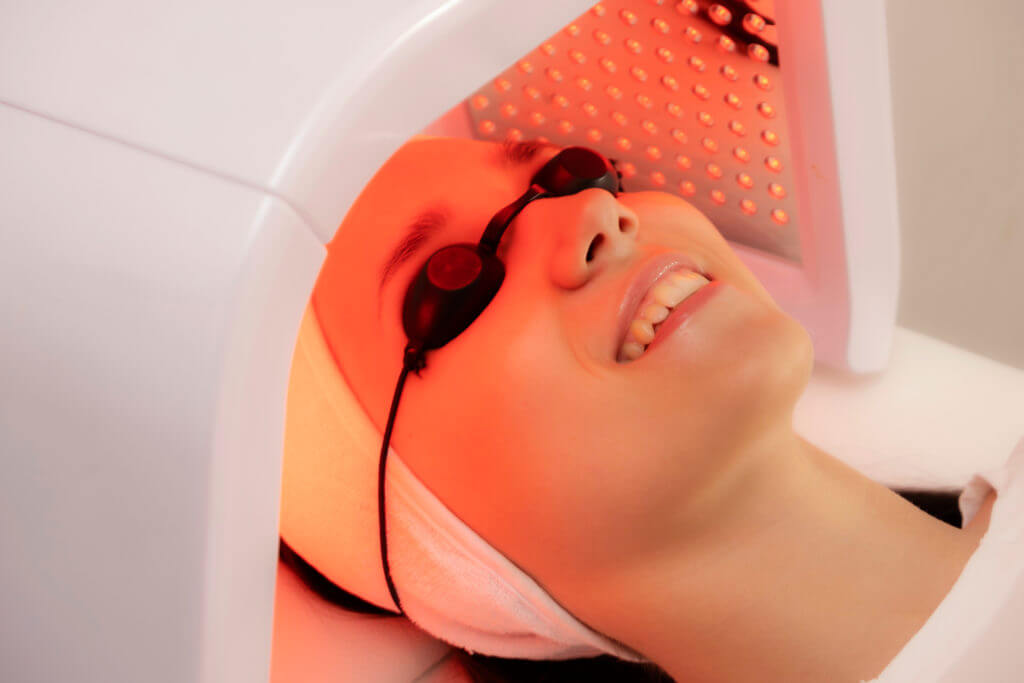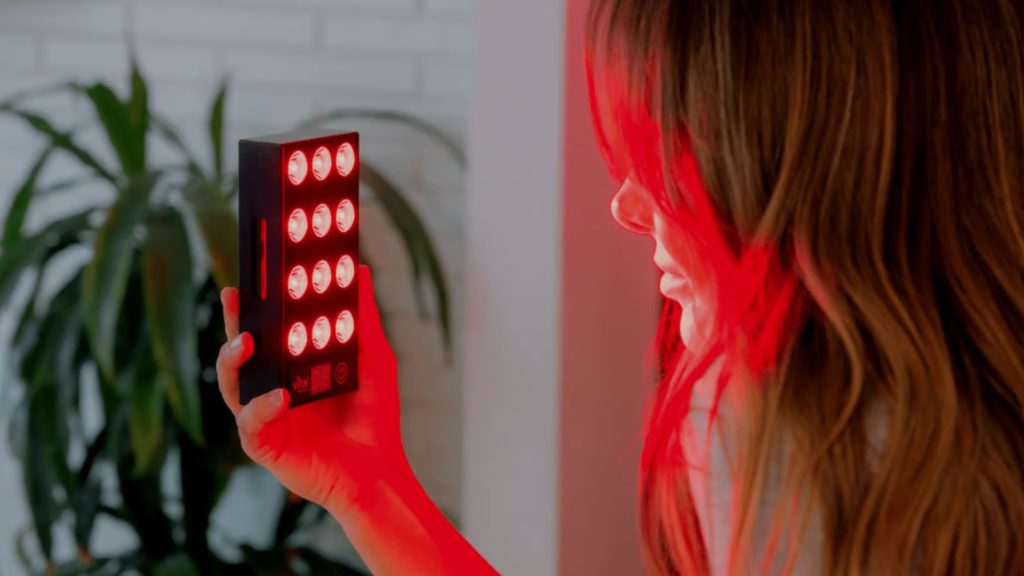Red light therapy has been increasing its popularity lately. Mostly it’s known for its cosmetic effects. It might increase the skin’s ability to heal scars, acne, blemishes, and other conditions, as well as give the skin a healthier look.
Professional and amateur athletes have also jumped on the bandwagon, primarily because of its possible effects on muscle recovery and athletic performance.
However, a new frontier where red light might be effective has been forming lately: mental health, which is low dopamine. Could red light affect mental health, and does red light therapy increase dopamine?
Continue reading to determine whether you can increase dopamine levels, improve mood disorders, and much more.

Source: massagetheory.com
Does Red Light Therapy Increase Dopamine?
A lack of dopamine production has been directly linked to low blood flow. This means that individuals with abnormal blood flow to their frontal cortex are likely to lack dopamine and serotonin and potentially experience depression.
When light therapy is administered, red light might penetrate the skull and stimulate the brain. This leads to a considerable increase in blood flow which might help in the production of dopamine; ATP production might also be increased. Hence, RLT may help increase dopamine.
Red light might immediately positively affect an individual’s mood and hormones. This might potentially assist people that are combating anxiety and depression.
A study was done in 2009 directly looked at the question, how does red light therapy increase dopamine? Ten individuals had an approximately 16-minute session with red light, each in individual sessions. The study was set for four weeks, but most patients had shown massive improvements in just one session of red light treatments.
More than half of the people in the study experienced temporary relief of their symptoms after four weeks. Six of those 10 individuals claimed to have possibly fewer depression symptoms, and seven out of 10 individuals experienced possible relief from anxiety.
Administering red light to boost dopamine
Red light therapy is simply shining a light into your head and expecting to receive results. For the treatment to be effective, it’s important to use the correct pulse rate, power density, and light range. Using the wrong combination of the three could lead to ineffective treatment.
Luckily the particular treatment parameters for increasing dopamine are well known, regarding pulse rate, 40 Hz, and 10 Hz with light rays of 810 nm. The light must be aimed at the base of the skull and the frontal cortex.
A treatment lasting only 20 minutes with these parameters leads to immediate results. So, you might also improve your memory, mood, and mental cognition by using red light.
Red light therapy vs. medication
Individuals can save time and money by using red light therapy to possibly increase dopamine production. Light therapy was a costly procedure relegated only to high-end wellness centers.
However, lately, because it’s become increasingly popular, it can be found in many clinics as a cheap, easy-to-access treatment. You can even buy a device of your own and conveniently have sessions in your home if you can afford it.
The medications used for increasing dopamine and serotonin production can be very addictive, or they could lead to many unfortunate side effects.
In addition to this, these medications are tough to get. A popular and effective drug called Benzodiazepine is almost impossible to get because it’s been abused by individuals in the past.

Source: vitalredlight.com
Additional Benefits
After discovering if this therapy can increase dopamine, you should also learn more about the possible benefits. Red light therapy has undoubtedly become a major treatment option for many conditions.
There are 32 proven usages for a red light, all of which are supported by peer-reviewed clinical trials. Red light therapy has been proven to possibly affect many different human body regions, including the brain.
What makes it different from traditional treatments is that it has no side effects and is very easy to treat a variety of brain-related conditions, like an increase in dopamine production. In a few cases, researchers noticed measurable improvements in as little as a single treatment.
Light therapy has been shown to possibly help cognition and memory capacity and help with mood-related conditions. It might be an amazing substitute for many current medications and cognition treatments.
Implementing Red Light Therapy
Red light therapy works by stimulating the body cells. By using a red light device to shine the light at a certain region of the body, you might cause the production of ATP (adenosine triphosphate) within the mitochondria.
ATP is the body’s main energy source, and its production might stimulate the healing of damaged cells and the production of new cells. In addition, it might cause the blood vessels to increase the delivery of oxygenated blood to that body region. This might greatly stimulate health and healing.
To do this, red light must be administered at a certain wavelength. Light, in general, is categorized into different parts of the spectrum of white light.
Red light naturally occurs with wavelengths between 650 nanometers to around 800 nanometers. For some reason, wavelengths in these margins react with the cells of the body and might stimulate them.
You Might Be Interested: Does Red Light Therapy Help Balance Hormones?
Conclusion
Well, this is the very end. So, does red light therapy increase dopamine? The answer may be a yes.
This new incredible treatment might affect human health in many positive ways. People might feel apprehensive about treating the brain with red light, but science is there. Many scientific studies confirm its effectiveness in possibly producing dopamine and alleviating depression and anxiety symptoms in the process.
If you’re suffering from these conditions or need a general dopamine boost, we strongly recommend you try it. Remember to consult with a medical professional before you do.

Hello! I’m Nicky Rodgers.
Almost a decade ago, I got excited about the idea of employing alternative methods like red light therapy to create a healthier life.
To learn more about it, I did my Certified Light Therapist course from Photonic Therapy Institute and started looking into the intricacies of how light therapy influences several bodily processes. Before I knew it, my interest had become an obsession which resulted in this extensive blog.
Here, I offer countless well-researched articles to help you understand the benefits and uses of light therapy. I hope this information gives you a head start in your wellness journey.
